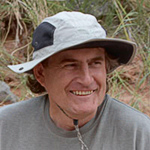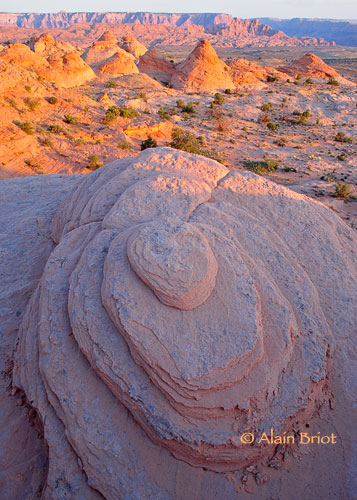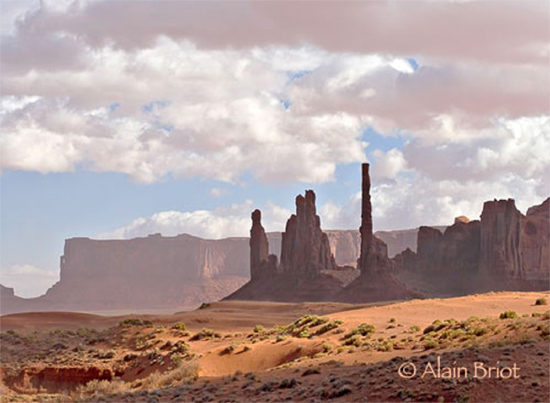 HOME  FORUMS FORUMS  NEWS NEWS  FAQ FAQ  SEARCH SEARCH |
AN ALAIN BRIOT ARTICLE
|
|
|
Editorial  Introduction to OPF Introduction to OPF Articles  Ricoh’s GR Digital II Review Ricoh’s GR Digital II Review by John Nevill by John Nevill   Nicolas Claris featured Nicolas Claris featured Sinar Photographer for 2008 Sinar Photographer for 2008  by Asher Kelman by Asher Kelman The Hard Side of Beauty The Hard Side of Beauty by Asher Kelman by Asher Kelman Canon EOS 1D Mark III Report Canon EOS 1D Mark III Report by Arthur Morris by Arthur Morris Seeing Like a Master Seeing Like a Master by Alain Briot by Alain Briot Photography As Art Series Photography As Art Series by Asher Kelman by Asher Kelman The other migrant mother The other migrant mother by Michael Stone by Michael Stone Fast Yachts at Sea, The Journey Fast Yachts at Sea, The Journey of a Captain & his Wife of a Captain & his Wife by Asher Kelman by Asher Kelman Rainer Viertböck’s Travel Rainer Viertböck’s Travel  Photography: Exposing for the Photography: Exposing for the  soul! by Asher Kelman soul! by Asher Kelman Tips for getting a human figure in Tips for getting a human figure in a location shot by Edmund Ronald a location shot by Edmund Ronald Stephen Eastwood an interview Stephen Eastwood an interview by Edmund Ronald by Edmund RonaldThe Team  Membership  About About Read TOS & Register Read TOS & RegisterSubmission  Articles Articles To offer services To offer services Donations Donations Adverts Adverts Sponsorships Sponsorships Contact Contact Meta.editorials In the forums Photography Exhibitions |
A – Learning how to see If only I could tear out my brain and use only my eyes. 1-To try and photograph everything is to end up photographing nothing well By definition seeing is selective. Vision, which is the end product of seeing, the outcome of being able to see, of having the ability to see what others do not see, is choice. Vision is saying yes to some of the subject and no to some of the subject, usually no to a much larger part of the subject. A selection has to be made for we know that to photograph everything is to photograph nothing. Why is that? Simply because it takes years and years to photograph well –read see well, see like no one else’s sees- part of the total reality offered to us daily. It takes a huge amount of time and effort to do so. Therefore, if you try to photograph everything that is offered to you –if you try to See everything that is offered to you- you will fail, not because you must fail, but because you will run out of time before you can perfect your vision of any given part of the total we are offered daily. You will not be able to put the time required in any of these countless number of parts, and instead you will dilute your efforts, resulting in banal images at worst, or images that “have potential but aren’t quite there yet” at best. 2-You must therefore be selective
I was asked several times what this photograph of Navajoland is about. Each time my answer is the same: it is about Navajoland, albeitedly about an aspect of Navajoland that few people get to see. It is not about Monument Valley, Canyon de Chelly or Antelope Canyon, to name but a few of the most popular and better-known aspects of Navajoland. Instead, it is about a more discrete aspect of Navajoland, one that many drive-by unaware, one that most may not even see, yet one that most visitors do know and appreciate, but do not think of as the subject for a photograph. Rather, for many visitors the contents of this image are part of the ambiance of Navajoland, part of the feeling and the visual landscape that surrounds them. It is not why they went there necessarily, and hence they do not seek it. Rather, it seeks them. Only a full awareness of what you are looking for in your subject will lead you to photograph scenes like this one. To me, these are the most satisfying images because they go beyond the surface of things, beyond the expected reality of a given place. It took me years to see them. 3-You must be selective within the field of landscape photography 4- You need to define the light you want to work with. 5-You need to define your approach on the basis of what you love to do So what is your approach? Your approach is what you are comfortable doing, what you enjoy doing. Your approach is not what you don’t like doing, what you don’t feel comfortable doing. In other words, do what comes naturally, do what you like to do. Even better, define your approach based on what you love to do. Get rid of what you are doing because you saw someone else do it, because an ad made you believe this was right for you, because you idolized a pro who uses a particular approach which you, willy-nilly, thought should be yours as well. 6-You need to study photographers who do or did what you love to do
I tried several different compositions before finalizing my choice onto this particular one. I found the location the evening before, then returned the next day in the dark to set up before sunrise. 8- You then can begin creating your own work 9- You are now working in a specific genre, or style. 10- At this stage, take time to re-evaluate your vision, your selections. 11- At this time I recommend you record the ideas that come to you. 12-Breakthroughs happen unexpectedly – welcome them, don’t reject them When this event happens, this sudden discovery takes place, this new lead pops into your mind: follow it. Do not hesitate, do not look back, and do not fear that you will miss the shot you were after when this new and overwhelming idea came to you. The shot you were going to take, in all likeliness, is a banal one. The shot you were going to take is the one you want to get away from but do not know how to get away from. So, no, don’t look back for a second and worry about what you are about to miss if you follow this new, and unexpected, direction. You are going to miss nothing! In fact, truth is what you are going to miss is this entirely new idea that you just had, and you are going to miss it if you decide to not do it. The new isn’t just the composition, the light, the choice of camera, and so on. The new is also the choice of presentation. For example, deciding to create a series of images – a triptych for example, printed on the same sheet of paper, is a departure from the standard, which is to print one image per sheet. B - Developing a personal Style Etonnez moi! (Astonish Me!) 1-There is seeing and then there is seeing. 3-We see what we have learned to see 4- Many of us, if not most of us, see that we have been conditioned to see. That is, our seeing abilities are limited by our conditioning. To be creative, to see in a way that is unique to us, we must liberate our ability to see in order to see beyond the surface of things, see in ways that are free of conditioning. The liberated artist’s eye sees not only what is there, but also, and mainly, what “isn’t there.” What isn’t there is what is only visible to this one person. Others do not see it because this artist is seeing beyond the surface of things, beyond the surface of what is presented to him. What this artist is seeing is his world. 5-You must become intimately familiar with the subject of your photograph to make a successful image. 6- A personal style is an artistic filter though which you look at the world 7- When you reach this point in your seeing journey, there is nothing you have to fear. 8 - The only way that you can misinterpret the world is if you believe that 9-A true artist is able to astonish –surprise- his audience by presenting them with art that this audience has not seen before. True art embodies a new way of seeing. 10 - Creativity, like photography, is all about the art of "seeing." In other words, looking at the same situation as everyone else, but seeing something different. We all look at the same thing, but through study and practice we can learn to see something that no one else’s see. Through further study and practice we can learn to represent what we see through our chosen medium. Through even further study and practice we can learn to do this better than anybody else. To rely mainly on composition is to create an image that is contrived. We have tried so many compositions, and so many variations on compositions, as a culture that we have come close to having exhausted the subject. One now needs to rely on tone and color to bring in this uniqueness that enchants the viewer. One cannot simply rely on shapes and arrangements. 11 - Look in depth, look for a long time. Study your subject before photographing it.
I arrived upon this scene at mid-day, and I was immediately stunned by the quality of the light. A sandstorm was blowing through Monument Valley, and the sand suspended in the air created a soft golden glow. The light was diffused yet direct. Shadows were noticeable yet open and not harsh as they usually are at that time of day. The clouds were moving fast over the valley, creating a sense of urgency because whatever cloud pattern formed an interesting composition only lasted for a couple of minutes at the most. I knew the wind could stop blowing at any time and the sun emerge from the clouds, and that if that happened it would immediately put an end to the magical light quality I was witnessing at that moment. I therefore set to work immediately. The problem was finding the proper composition, and I struggled with that during the entire shoot, which lasted barely 15 minutes until the sun did come out, the sand stopped blowing, and the clouds moved away. In only a few minutes this magical scene returned to a mundane mid-day look. The enchanting qualities that so attracted me were gone forever. In the studio I worked hard looking at each image in detail, trying to decide which composition best expressed the feeling of the scene as I remembered it. I eliminated vertical views because they did not share the expanse of land and cloud. I eliminated tight croppings for the same reason. I eliminated wider views because they diluted the interest too much, taking away the impact of the Totem Pole. I also worked for a long time on the tonal and color adjustments of the image, trying to recreate the soft golden glow of the sandstorm. 12 - To rely mainly on the rules of composition is to create an image that is contrived 13- If you find –and you most likely will- that another artist has used the same “filter” before you, become the world’s expert of that artist’s work. You need to know exactly what that artist has done and how he has done it, in order for you to go beyond what this artist has achieved. Anything less will not be a pure personal style but a copy of this person’s work, even if you did not know that person existed when you originally developed your style. 14 – To develop a personal style is to become an expert in a specific way of seeing Alain Briot Alain Briot specializes in photographing the natural landscape. In addition to fine art prints, Alain offers workshops and DVD tutorials to help you study landscape photography, printing, matting, selling your work and much more.
Alain welcomes your comments. This article is discussed here and your feedback is welcomed! |
HOME  FORUMS FORUMS  NEWS NEWS  FAQ FAQ  SEARCH SEARCH |



